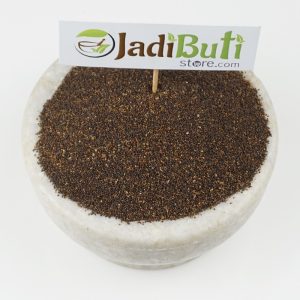S
Showing 37–48 of 62 results
-

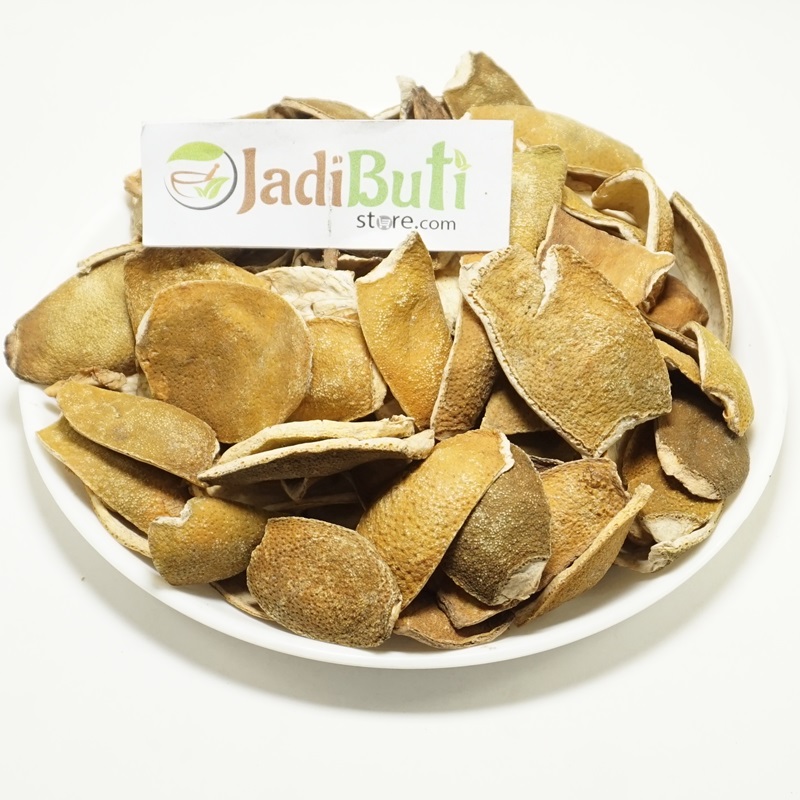
santra chilka – संतरा छिलका – Orange Peel – Citrus aurantium
₹100.00 – ₹800.00Quick ViewOrange peel refers to the outer, colored skin of oranges, which is typically removed and discarded before eating the fruit. However, orange peel has been used for centuries in traditional medicine systems like Ayurveda, as it is rich in beneficial plant compounds.
Here are some Ayurvedic properties and health benefits associated with orange peel:
Ayurvedic Properties:
- Rasa (taste): Bitter (tikta), Astringent (kashaya), Pungent (katu)
- Virya (energy): Cooling (shita)
- Vipaka (post-digestive effect): Pungent (katu)
- Doshas (constitutions): Balances Kapha and Pitta, aggravates Vata in excess.
Health Benefits:
- Digestive health: Orange peel is believed to stimulate digestion, relieve indigestion, and reduce bloating and gas.
- Immune system health: Orange peel is rich in vitamin C, which can help to support the immune system and protect against infections.
- Respiratory health: Orange peel is believed to have expectorant properties, which can help to relieve respiratory congestion and promote the elimination of mucus from the lungs.
- Skin health: Orange peel is often used in Ayurvedic preparations for skin health, as it is believed to have anti-inflammatory and wound-healing properties.
- Anti-inflammatory properties: Orange peel is believed to have anti-inflammatory properties, which can help to reduce inflammation and pain in the body.
- Antioxidant properties: Orange peel contains flavonoids and other antioxidants, which can help to protect the body against damage from free radicals.
It is important to note that more scientific research is needed to validate these benefits and to determine the safety and effectiveness of orange peel for these uses. It is also recommended to use organic oranges when using the peel, to avoid ingesting pesticides or other harmful chemicals.
-
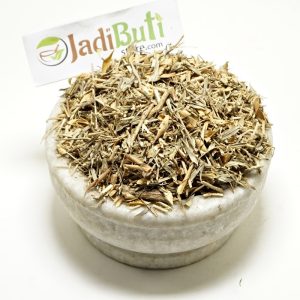

Sarphokha – सरफोखा – Purple Tephrosia – Tephrosia purpurea
₹190.00 – ₹1,455.00Quick ViewSarphoka (Tephrosia purpurea):
Common Name: Sarphoka, wild indigo, purple tephrosia, fish poison plant
Scientific Name: Tephrosia purpurea
Family: Fabaceae
Parts Used: Whole plant, roots, leaves, seeds
Ayurvedic Properties:
- Rasa (taste): Bitter (tikta), Pungent (katu)
- Virya (energy): Hot (ushna)
- Vipaka (post-digestive effect): Pungent (katu)
- Doshas (constitutions): Pacifies Kapha and Pitta
Health Benefits:
- Digestive health
- Respiratory health
- Skin health
- Liver health
- Anti-inflammatory and analgesic properties
- Anti-cancer properties (preliminary research)
Note: Sarphoka should be used under the guidance of a qualified Ayurvedic practitioner. It is not recommended for pregnant or lactating women and should be used with caution in individuals with liver or kidney disease.
-
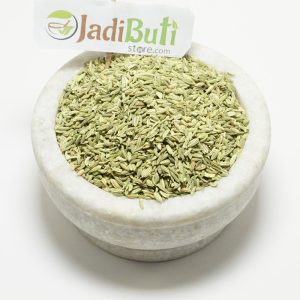

Saunf(Organic) – सौंफ – Fennel Seeds – Foeniculum vulgare
₹140.00 – ₹1,060.00Quick ViewCommon Name: Fennel Seeds
Botanical Name: Foeniculum vulgare
Plant Family: Apiaceae (Umbelliferae)
Parts Used: Seeds, leaves, and bulbs
Native Region: Mediterranean region
Taste (Rasa): Sweet (Madhura), bitter (Tikta)
Energy (Veerya): Cooling (Sheet)
Post-Digestive Effect (Vipaka): Sweet (Madhura)
Doshas: Balances Pitta and Kapha doshas
Chemical Composition: Fennel seeds contain essential oils, flavonoids, phenolic compounds, and fatty acids.
Traditional Uses:
- Digestive Health: Fennel seeds are commonly used to promote digestion and alleviate digestive issues like bloating, gas, and indigestion.
- Respiratory Health: Fennel seeds are believed to help alleviate respiratory issues like coughs, bronchitis, and asthma.
- Women’s Health: Fennel seeds are commonly used to alleviate menstrual cramps and other symptoms of menstrual disorders. They are also believed to help increase breast milk production in lactating mothers.
- Eye Health: Fennel seeds are thought to help improve eye health and alleviate eye disorders like conjunctivitis.
Modern Uses:
- Fennel seeds are used in the food and beverage industry as a flavoring agent in various dishes and beverages, including teas, liquors, and baked goods.
- Fennel seeds are used in some natural and traditional medicine systems for various health benefits.
- Fennel essential oil is used in aromatherapy for its calming and soothing effects.
Precautions/ Side Effects:
- Fennel seeds may cause allergic reactions in some individuals.
- High doses of fennel seeds may have toxic effects and can cause symptoms like nausea, vomiting, and seizures.
- Pregnant women should avoid consuming large amounts of fennel seeds as it may stimulate uterine contractions.
- Fennel seeds may interact with certain medications, so it is important to consult with a healthcare provider before using fennel seeds for medicinal purposes.
-


Semal phool – silk cotton tree – Bombax B. ceiba
₹140.00 – ₹1,135.00Quick ViewSemal Flower, Silk Cotton Tree Flower
Scientific Name: Bombax ceiba
Benefits in Ayurveda:
Health Benefit Description Respiratory Health promote healthy lungs and clear airways Digestive Health support healthy digestion and relieve digestive issues Wound Healing speed up the healing process of wounds and injuries Immune System Support boost the immune system and protect against infections Anti-inflammatory reduce inflammation and pain in the body Analgesic relieve pain, such as headaches and menstrual cramps Anti-microbial fight against bacterial and fungal infections Stress-Relieving promote relaxation and reduce stress levels Cardioprotective regulate blood pressure and prevent cardiovascular diseases Anti-cancer have anti-tumor and anti-cancer effects Aspect Classification Taste (Rasa) Sweet (Madhura) Energy (Virya) Cooling (Shita) Post-Digestive Effect (Vipaka) Sweet (Madhura) Effect on Tridosha Balances Kapha and Pitta, aggravates Vata -


Senna leave – सेन्ना पत्ती – Cassia angustifolia
₹110.00 – ₹875.00Quick ViewSenna leave – सेन्ना पत्ती – Cassia angustifolia
Common Name: Senna Leaves
Scientific Name: Cassia angustifolia
Family: Fabaceae
Native Region and Geographical Distribution: Senna leaves are native to the regions of the Arabian Peninsula, Africa, and India. They are widely cultivated in many parts of the world including India, Pakistan, Egypt, Sudan, Somalia, and Ethiopia.
Active Compounds: The primary active compounds in Senna leaves are anthraquinone glycosides such as sennosides A and B.
Ayurvedic Properties: Senna leaves are known to have a strong laxative effect and are used in Ayurvedic medicine to treat constipation, cleanse the bowel before diagnostic procedures, and to treat conditions such as hemorrhoids and anal fissures.
Other Benefits: Senna leaves may also have potential as an anti-inflammatory and antimicrobial agent. However, further research is needed to explore these properties.
Precautions and Side Effects: Senna leaves should not be used for prolonged periods of time or in excessive amounts, as this may lead to dependency, electrolyte imbalances, and other complications. Long-term use may also lead to a condition known as melanosis coli, which is characterized by the discoloration of the colon. Senna leaves are also not recommended for use during pregnancy or breastfeeding, as they may cause uterine contractions or pass through breast milk.
Disclaimer: This information is not intended to be a substitute for professional medical advice, diagnosis, or treatment. Always seek the advice of your physician or other qualified healthcare provider with any questions you may have regarding a medical condition.
-

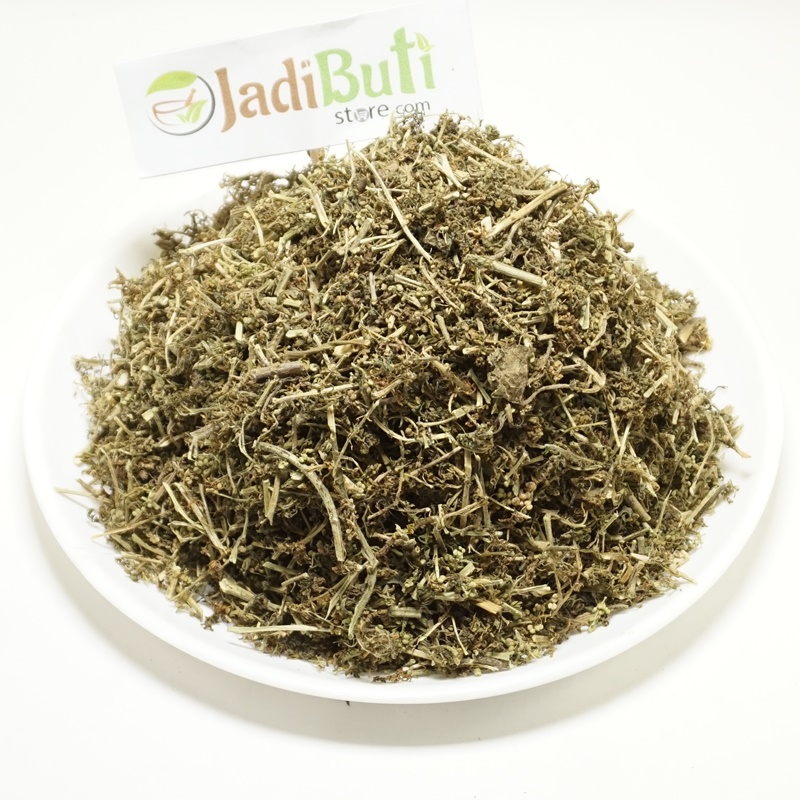
Shahtara – शाहतारा – Common Fumitory – Fumaria officinalis
₹320.00 – ₹2,595.00Quick ViewCommon Fumitory, Shahtra | Botanical Name: Fumaria officinalis
Family: Papaveraceae | Parts Used: Aerial parts
Ayurvedic Properties:
- Rasa (Taste): Bitter, Astringent
- Guna (Quality): Light, Dry
- Virya (Potency): Cooling
- Vipaka (Post-Digestive Effect): Pungent
- Doshas: Pacifies Pitta and Kapha doshas, may increase Vata in excess
Ayurvedic Uses:
- Supports liver health
- Improves skin health
- Improves digestion
- Relieves respiratory issues
- Purifies blood
- Boosts immunity
- Improves eye health
- Supports urinary health
- Relieves joint pain and inflammation
- Calms the mind
-
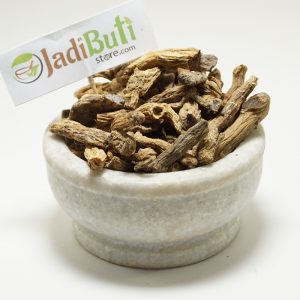
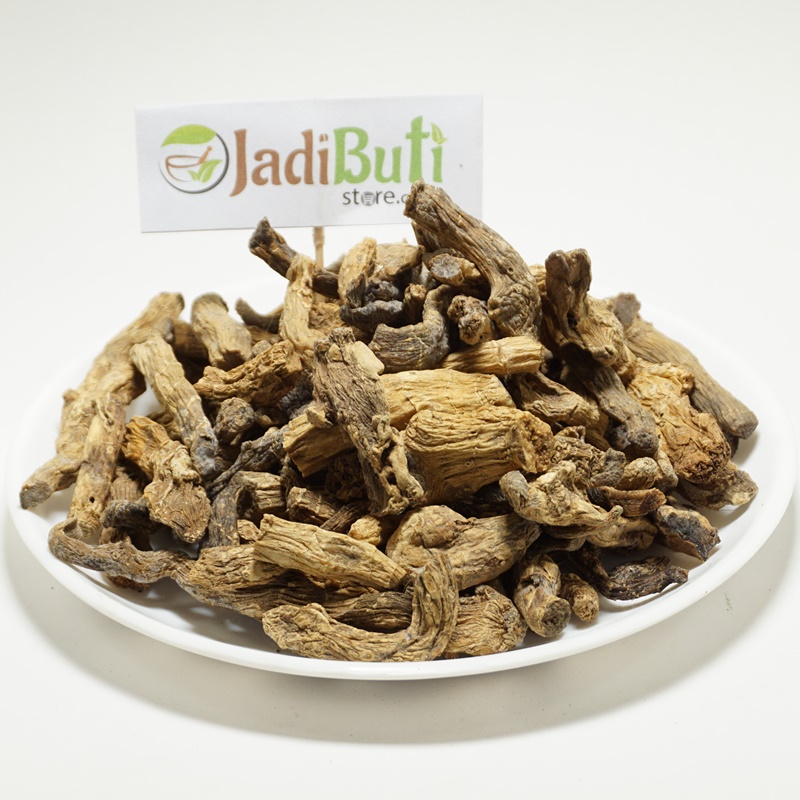
Shakakul mishri – शकाकुल मिश्री – Wild Parsnip – Pastinaca sativa
₹220.00 – ₹1,685.00Quick ViewCommon Name: Wild Parsnip
Scientific Name: Pastinaca sativa
Family: Apiaceae
Description: Wild Parsnip is a biennial or perennial plant that is native to Europe and Asia but has also been naturalized in North America. It can grow up to 5 feet tall and has a yellow-green stem with deeply divided leaves. The plant produces umbrella-shaped clusters of small yellow flowers in the summer. Its fruit is a small oval-shaped seed that is usually brown in color.
Uses: Wild Parsnip has some culinary uses and is often used as a medicinal herb. The root and leaves of the plant can be used in soups, stews, and other dishes. In traditional medicine, Wild Parsnip has been used to treat a variety of ailments, including indigestion, coughs, and rheumatism.
Toxicity: Wild Parsnip can be toxic due to the presence of chemicals called furocoumarins in its sap, which can cause skin irritation and sensitivity to sunlight. Contact with the sap can result in severe skin burns and blisters, similar to a severe sunburn. Therefore, it is important to wear protective clothing and gloves when handling or removing Wild Parsnip plants.
Distribution: Wild Parsnip is found throughout Europe, Asia, and North America. It is often found in fields, meadows, and along roadsides.
Conservation Status: Not listed as endangered or threatened.
-

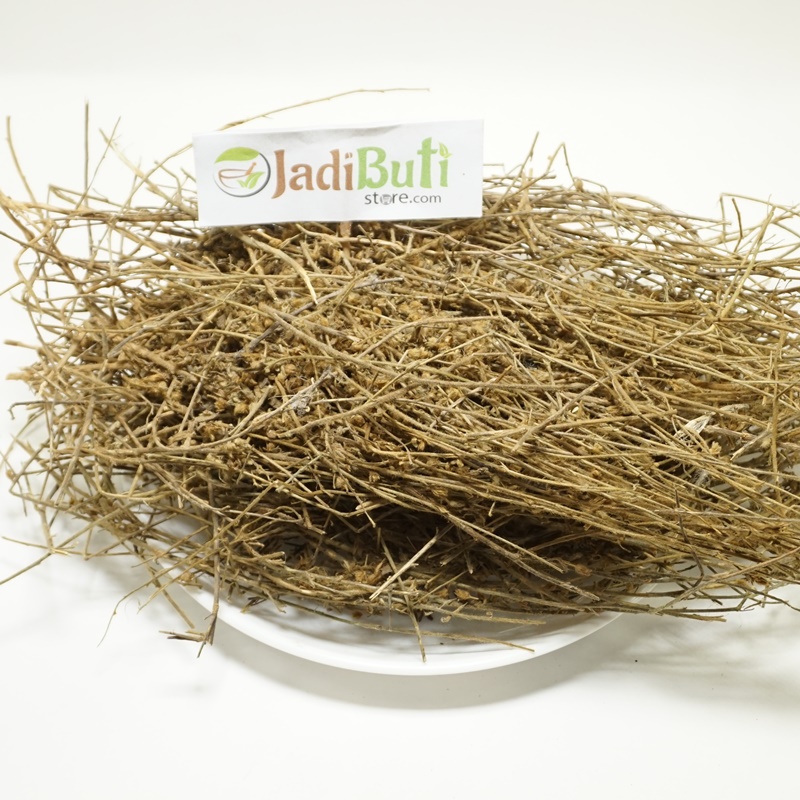
Shankhpushpi – शंखपुष्पी – Morning Glory – Convolvulus pluricaulis
₹90.00 – ₹690.00Quick ViewShankhpushpi – शंखपुष्पी – Morning Glory – Convolvulus pluricaulis
Common Name: Shankhpushpi
Scientific Name: Convolvulus pluricaulis
Plant Family: Convolvulaceae
Native Region: India
Traditional Uses: Shankhpushpi has been used in traditional Ayurvedic medicine to promote mental health, enhance memory, and improve overall cognitive function. It has also been used to alleviate anxiety, depression, stress, and improve sleep.
Active Compounds: Shankhpushpi contains several active compounds, including flavonoids, alkaloids, and glycosides, which are believed to be responsible for its medicinal properties.
Forms: Shankhpushpi is available in various forms such as powders, capsules, tablets, and liquid extracts.
Health Benefits: Shankhpushpi is believed to have several health benefits, including mental health, memory and cognitive function, sleep, anti-inflammatory properties, anti-diabetic properties, anti-convulsant properties, and wound-healing properties.
Precautions: Shankhpushpi is generally considered safe when consumed in appropriate amounts. However, it may cause side effects such as headache, dizziness, or upset stomach in some individuals. It’s important to talk to a healthcare professional before using Shankhpushpi, especially if you have any underlying health conditions or are taking medications.
-


Shatawar – शतावर – Wild Asparagus – Asparagus racemosus
₹160.00 – ₹1,200.00Quick ViewShatawar – Wild Asparagus
Scientific name : Asparagus racemosus | Product : Dried Shatawari
Ayurvedic Classification Description Rasa (taste) Sweet and bitter Guna (qualities) Heavy, unctuous, and cold Virya (potency) Cooling Vipaka (post-digestive effect) Sweet Dosha effect Pacifies Pitta and Vata doshas Karma (actions) Rejuvenative, nutritive, aphrodisiac, galactagogue, anti-inflammatory, and anti-ulcer Dhatu (tissue) affinity Works primarily on the reproductive, digestive, and respiratory tissues Srotas (channel) affinity Works primarily on the reproductive, digestive, and respiratory channels Prabhava (special effect) Enhances fertility and supports female reproductive health .
Active Compound Benefits Saponins (Shatavarin, Asparosides) Anti-inflammatory, immune-boosting, and adaptogenic properties Flavonoids (Rutin, Quercetin) Antioxidant, anti-inflammatory, and immune-boosting properties Asparagamine A Anticancer and antimicrobial properties Tannins Anti-inflammatory and antioxidant properties Alkaloids Anti-inflammatory and antimicrobial properties Shatavaroside A Antioxidant and neuroprotective properties Ascorbic acid (Vitamin C) Antioxidant, immune-boosting, and anti-inflammatory properties Beta-carotene Antioxidant and immune-boosting properties Zinc Immune-boosting and anti-inflammatory properties -

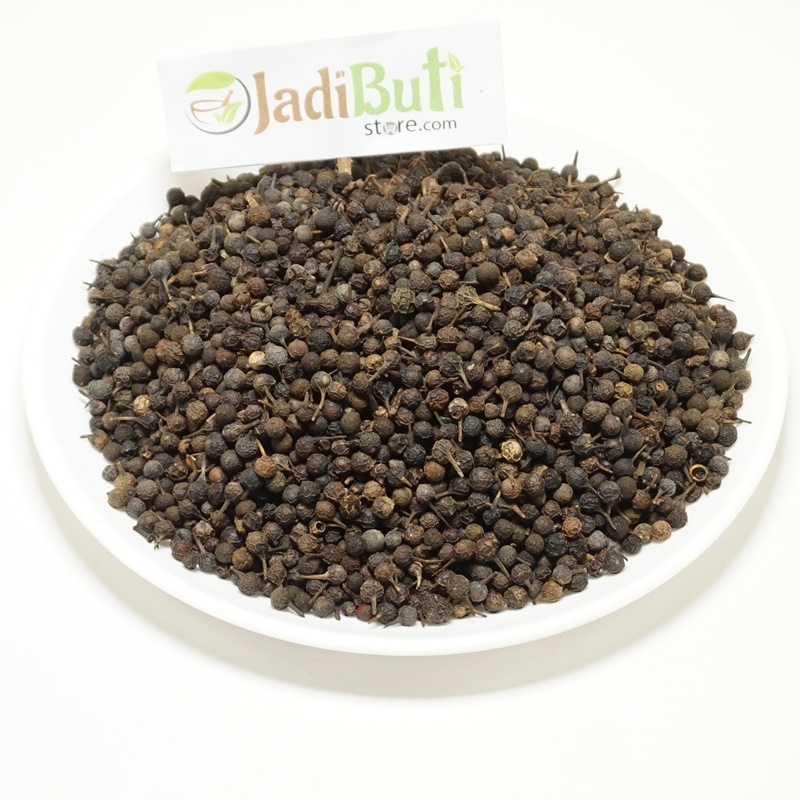
Sheetal chini – शीतल चीनी – Cubebs – Piper cubeba
₹480.00 – ₹3,975.00Quick ViewCommon Name: Cubeb Pepper, Tailed Pepper
Scientific Name: Piper cubeba
Plant Family: Piperaceae
Native Region: Java and other Indonesian islands
Traditional Uses: Piper cubeba has been used in traditional medicine to treat respiratory conditions, digestive disorders, urinary tract infections, oral health problems, and sexual dysfunction.
Active Compounds: Piper cubeba contains compounds such as cubebine, cubebol, and cubebin, which have anti-inflammatory, antimicrobial, and diuretic properties.
Forms: Piper cubeba is available in the form of dried fruit, powdered fruit, and essential oil.
Health Benefits: Piper cubeba is believed to have several health benefits, including respiratory health, digestive health, anti-inflammatory and antimicrobial properties, urinary tract health, oral health, and sexual health.
Precautions: Piper cubeba may cause gastrointestinal discomfort or allergic reactions in some individuals. It may also interact with certain medications, so it’s important to consult with a healthcare professional before use.

